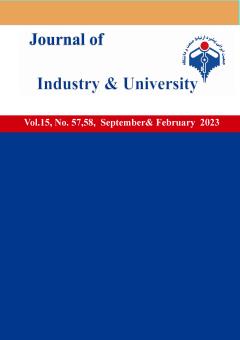Studying the Relationship Between Socio-cultural Capital and High-Risk Social Behavior of Iranian University Students
Subject Areas : General
Taha Ashayeri
1
![]() ,
Tahereh Jahanparvar
2
,
Tahereh Jahanparvar
2
![]() ,
Solmaz Avarideh
3
,
Solmaz Avarideh
3
![]()
1 - Studying the Relationship Between Socio-cultural Capital and High-Risk Social Behavior of Iranian University Students
2 - Ph.D. student of Cultural Sociology, Department of Social Sciences, Faculty of Social Sciences, Communication and Media, Islamic Azad University, Central Tehran Branch, Tehran, Iran
3 - Assistant Professor, Department of Social Sciences, Payam Noor University, Tehran, Iran.
Keywords: Social Capital, Cultural Capital, Risky Social Behavior, Students' Lifestyle, University,
Abstract :
High-risk behaviors among students is considered one of the issues of university and higher education in the country, addiction, smoking, high-risk sexual behaviors, dangerous driving, evasion of the law, etc., have reduced the quality of the academic system, academic decline, and the dominance of negative social issues on the overall atmosphere of the educational system. Social and cultural capital plays an important role in reducing risky social behaviors among students. The current research method is quantitative meta-analysis and systematic review based on sources and scientific documents published on Normagz, Iran Mag and Iran Doc sites in the period of 1403-1390. From the statistical population of 24 studies, following the screening steps and inclusion criteria (survey and quantitative, having sample size and Pearson and Spearman correlation coefficient, significance level and scientific validity), 13 documents were selected by non-probability sampling method (purposive and available). and entered into the cma2 software
The tests used are Cohen's d, Fisher's f, and Q tests. Finally, the effect size coefficient of Cohen and Fisher shows that social capital (31%) and cultural capital (36%) explain the changes in risky behavior of students and the direction of this effect is opposite, as well as cultural and social capital (general index) capital) has generally predicted 41% (inverse) of changes in risky social behavior.
Finally, with the increase of social and cultural capital due to the promotion of support structure, cohesion, partnership, trust and improvement of cultural dignity, awareness and cultural literacy; It prevents the normalization of negative, abnormal and dangerous actions and gradually the academic environment becomes a healthy, normal and self-controlling environment
